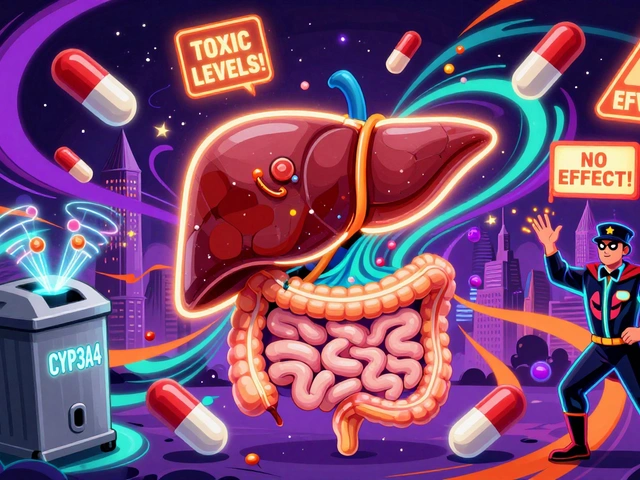Capecitabine Side Effects: What to Expect and How to Manage Them
When you're taking capecitabine, an oral chemotherapy drug used to treat colorectal, breast, and other cancers. Also known as Xeloda, it works by turning into 5-FU inside tumor cells to stop them from growing. But like all chemo drugs, it doesn’t just target cancer — it affects healthy cells too. That’s why side effects are common, and knowing what to watch for can make a big difference in how you feel during treatment.
Most people on capecitabine, an oral chemotherapy drug used to treat colorectal, breast, and other cancers. Also known as Xeloda, it works by turning into 5-FU inside tumor cells to stop them from growing deal with hand-foot syndrome — redness, swelling, tingling, or peeling skin on palms and soles. It’s not rare; up to half of patients get it. Some also report diarrhea, nausea, or tiredness. Less common but serious issues include low white blood cell counts (which raise infection risk) or heart problems like chest pain or irregular heartbeat. If you notice any of these, don’t wait — call your doctor. These aren’t just "side effects" — they’re signals your body is reacting, and early action helps.
What’s often overlooked is how capecitabine, an oral chemotherapy drug used to treat colorectal, breast, and other cancers. Also known as Xeloda, it works by turning into 5-FU inside tumor cells to stop them from growing interacts with your diet and daily routine. Some people find that spicy foods or hot showers make hand-foot syndrome worse. Others notice their fatigue spikes after certain meals. Tracking what you eat, how much you sleep, and when symptoms flare helps you and your team adjust your plan. It’s not about avoiding life — it’s about adjusting it so treatment doesn’t take over.
Many patients compare capecitabine, an oral chemotherapy drug used to treat colorectal, breast, and other cancers. Also known as Xeloda, it works by turning into 5-FU inside tumor cells to stop them from growing to other chemo drugs like 5-FU or oxaliplatin. It’s easier because you take it as a pill at home — no IV needed. But that also means you’re responsible for sticking to the schedule. Missing a dose or taking it with food when you’re supposed to take it on an empty stomach can change how your body handles it. That’s why clear instructions and a simple pill organizer matter more than you think.
Below, you’ll find real patient stories and expert breakdowns on how others handled these side effects — from managing diarrhea with diet changes to recognizing early signs of nerve damage. You’ll see what worked, what didn’t, and what to ask your oncologist before starting. This isn’t just a list of symptoms. It’s a practical guide to staying in control while your body fights cancer.
Capecitabine Supportive Care: How to Manage Symptoms and Side Effects
Learn how to manage capecitabine side effects with practical supportive care, grading tools, and symptom‑specific strategies to stay on therapy safely.





